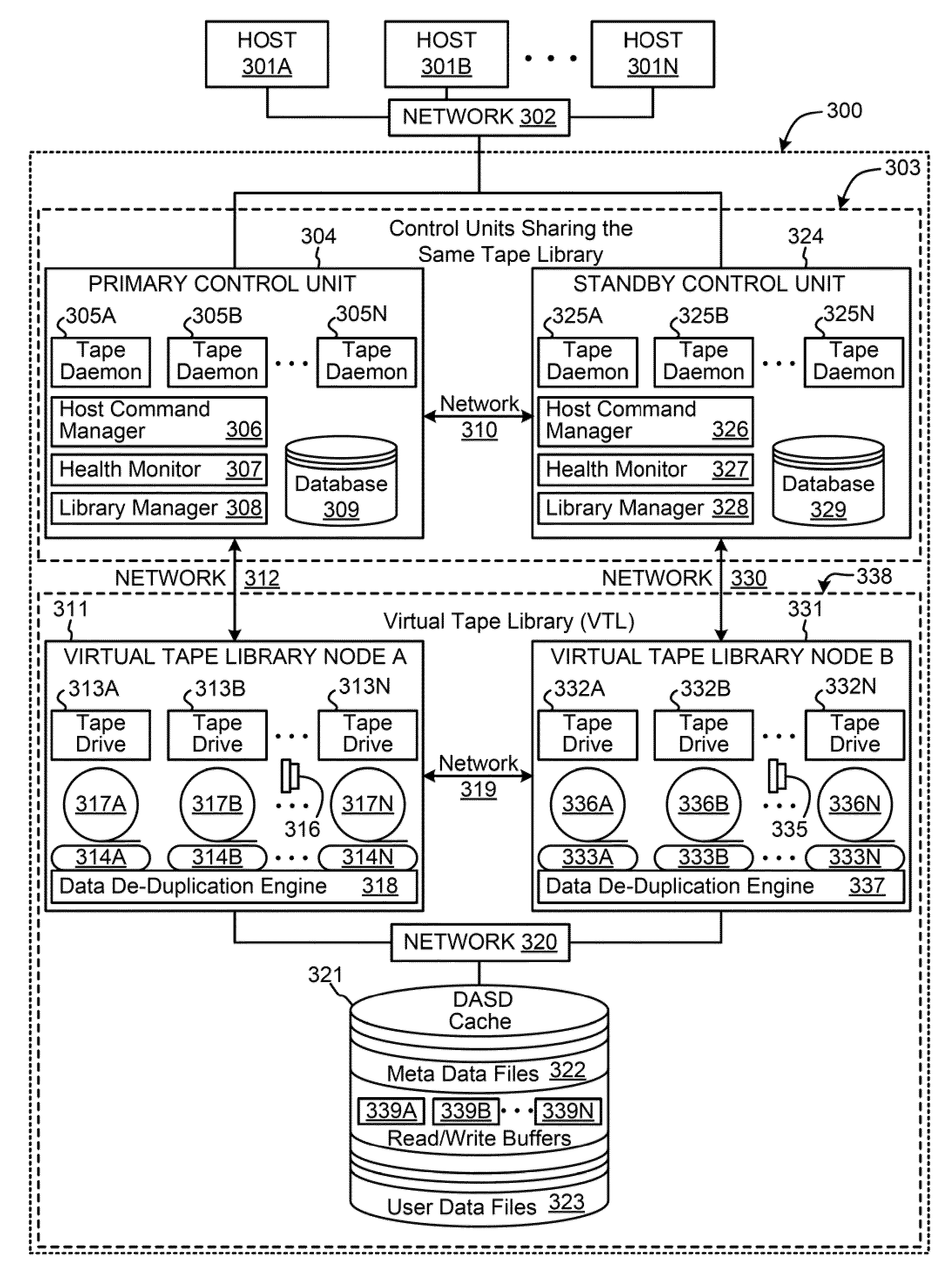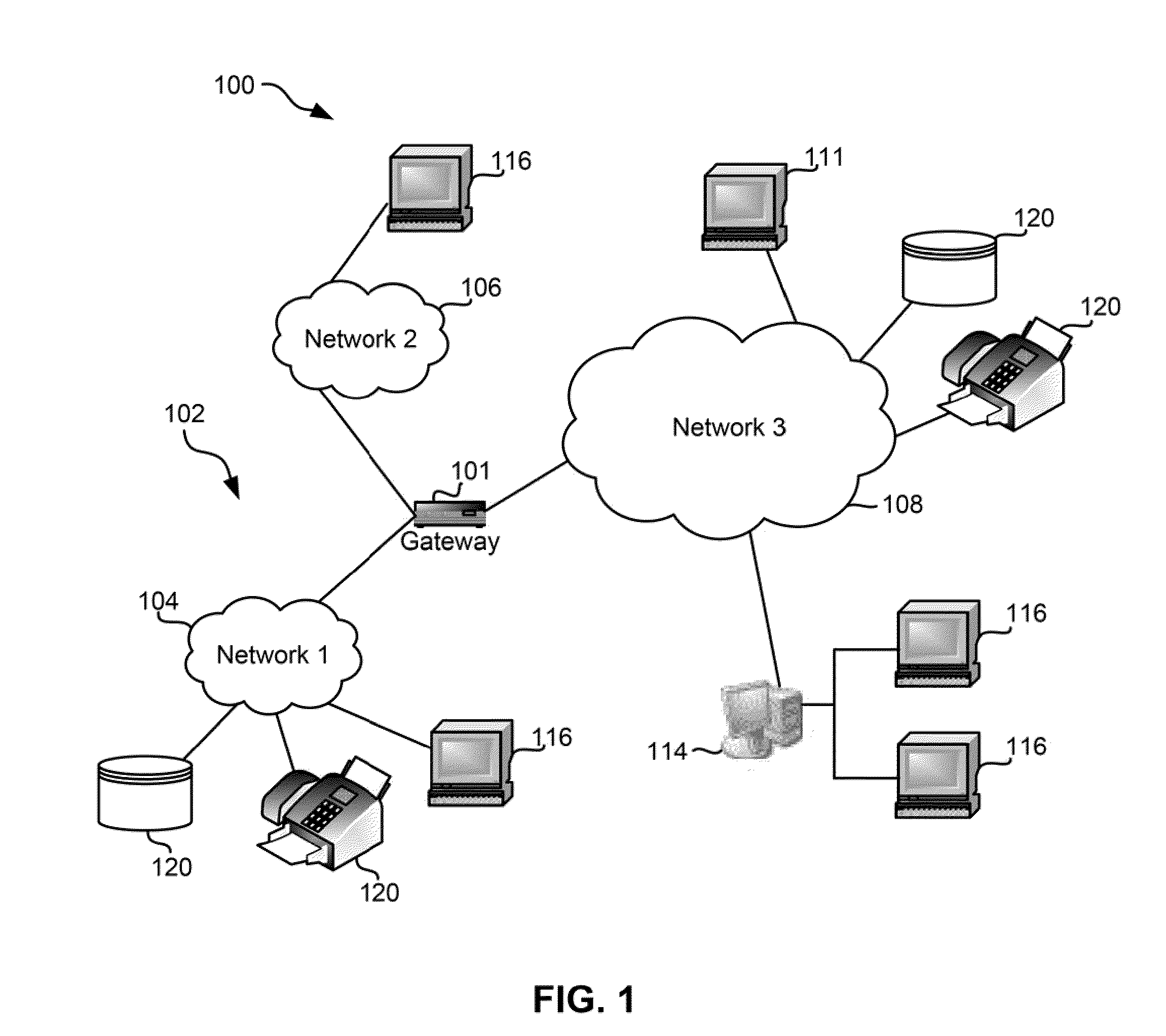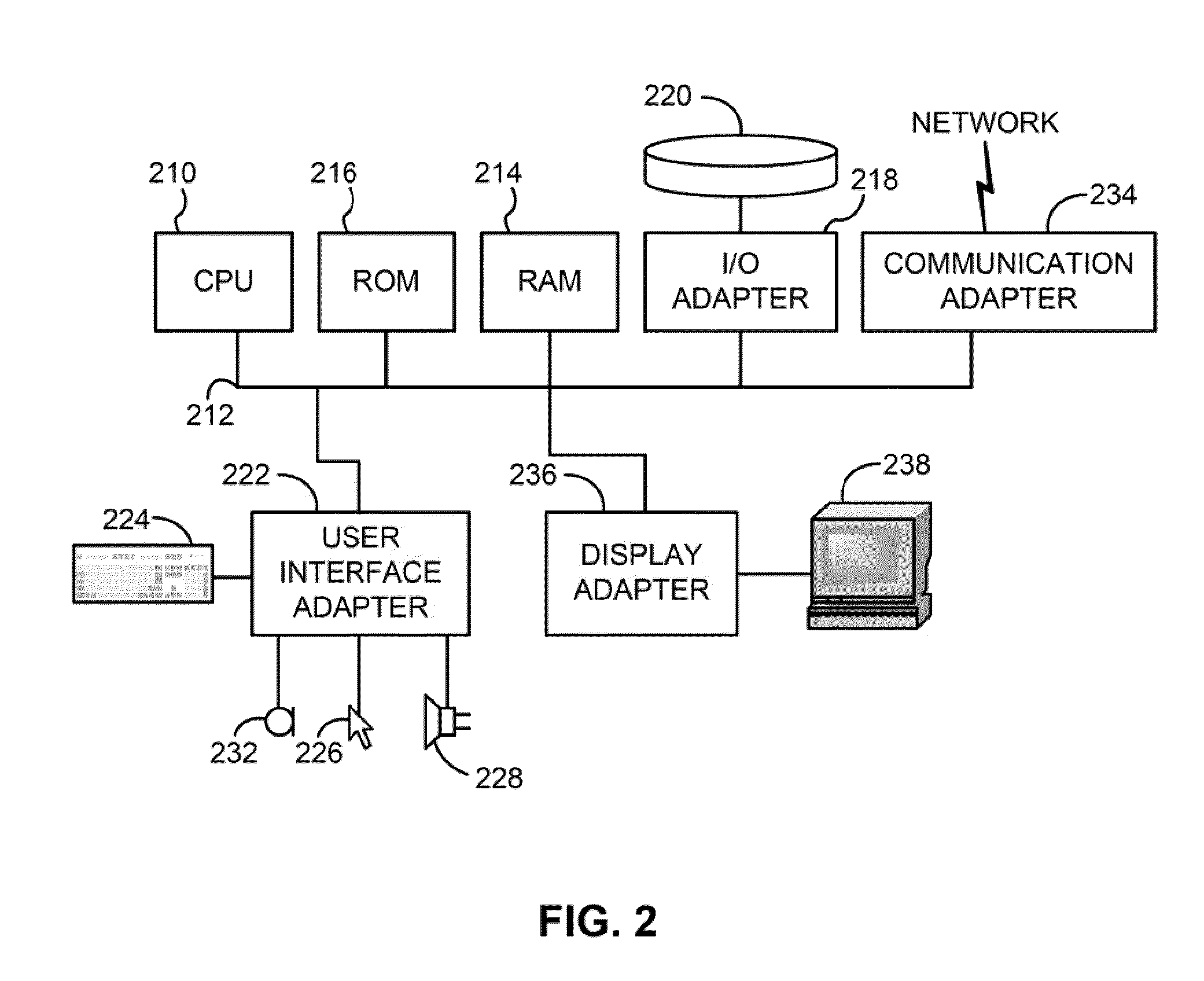Systems and methods for managing a cache in a multi-node virtual tape controller
a virtual tape controller and multi-node technology, applied in the field of systems and methods for managing caches in multi-node virtual tape controllers, can solve the problems of users' extreme upset when data is written to vts, limited storage capacity on each vtc, and failure of attempts to store more data
- Summary
- Abstract
- Description
- Claims
- Application Information
AI Technical Summary
Benefits of technology
Problems solved by technology
Method used
Image
Examples
embodiments
[0056]According to some embodiments, a host application may specify which volume should be scratched in a perform library function (PLF) command and the VTC sets the scratch flag and timestamp for the volume in the database. In addition, a customer or some other user may specify how many days to delay before deleting the data after the scratch flag has been enabled. This is referred to as a scratch delay value.
[0057]Also, in some approaches, a customer or some other user may specify whether the VTC should automatically delete data from scratch volumes if the “out of cache” state has been entered. This is known as the scratch decay setting. When the scratch timestamp expires, the VTC may issue a command to the VTL to delete the data from the volume. The VTL cache statistics may be monitored through a product specific log page returned by the VTL. The information reported by the VTL may include a remaining free space, a used space, and / or a total space, among other items possibly retu...
PUM
 Login to View More
Login to View More Abstract
Description
Claims
Application Information
 Login to View More
Login to View More - R&D
- Intellectual Property
- Life Sciences
- Materials
- Tech Scout
- Unparalleled Data Quality
- Higher Quality Content
- 60% Fewer Hallucinations
Browse by: Latest US Patents, China's latest patents, Technical Efficacy Thesaurus, Application Domain, Technology Topic, Popular Technical Reports.
© 2025 PatSnap. All rights reserved.Legal|Privacy policy|Modern Slavery Act Transparency Statement|Sitemap|About US| Contact US: help@patsnap.com



